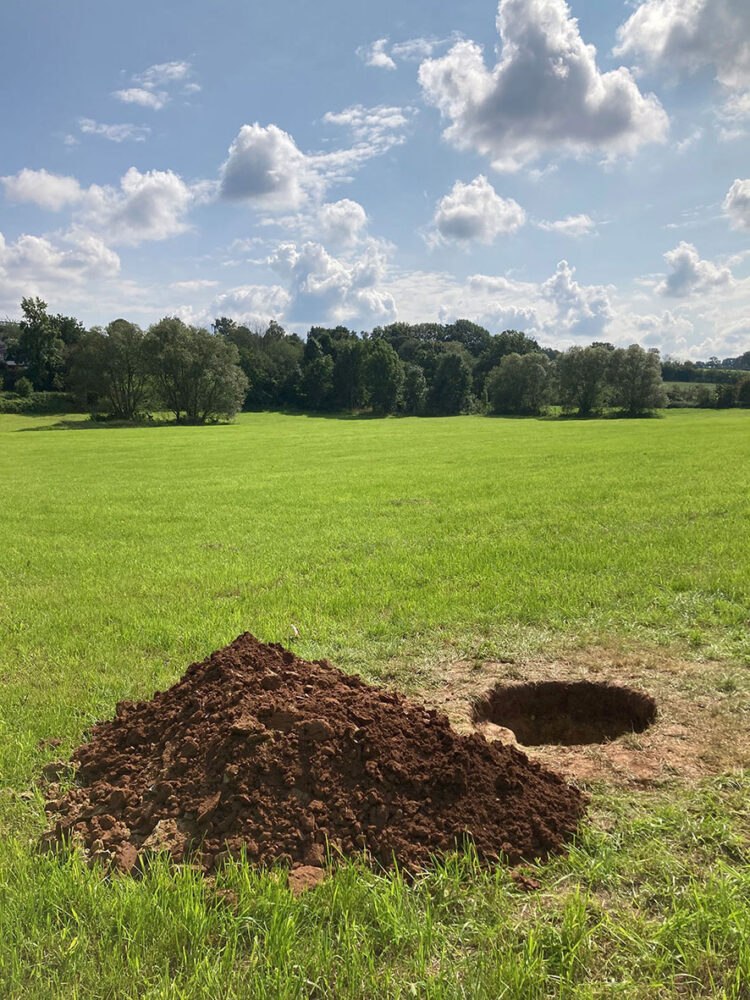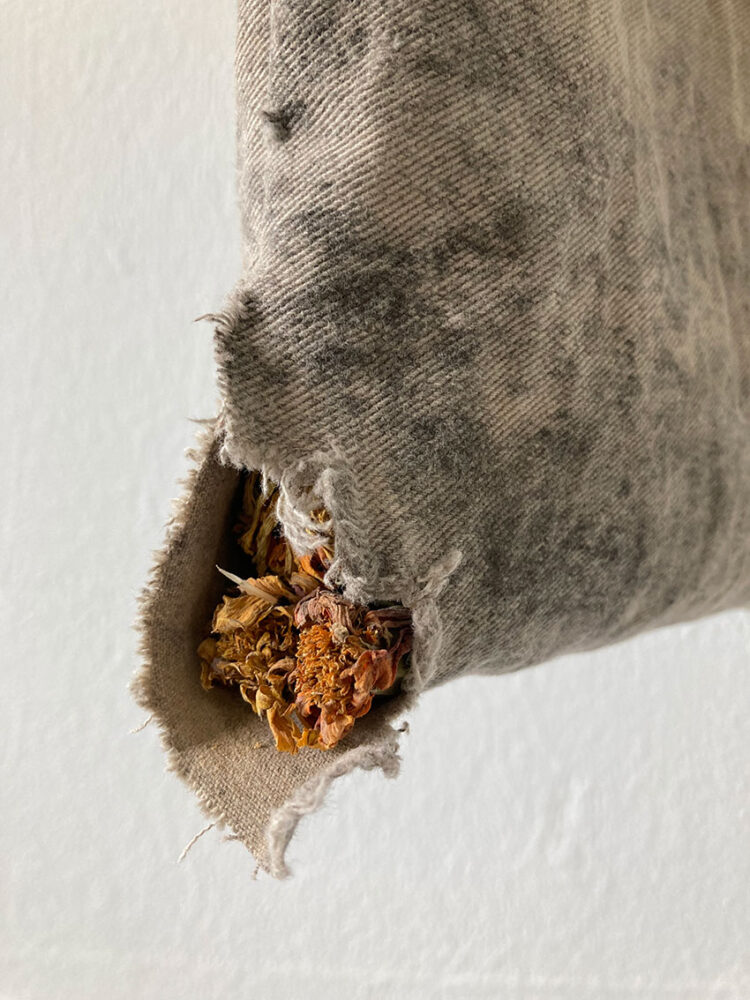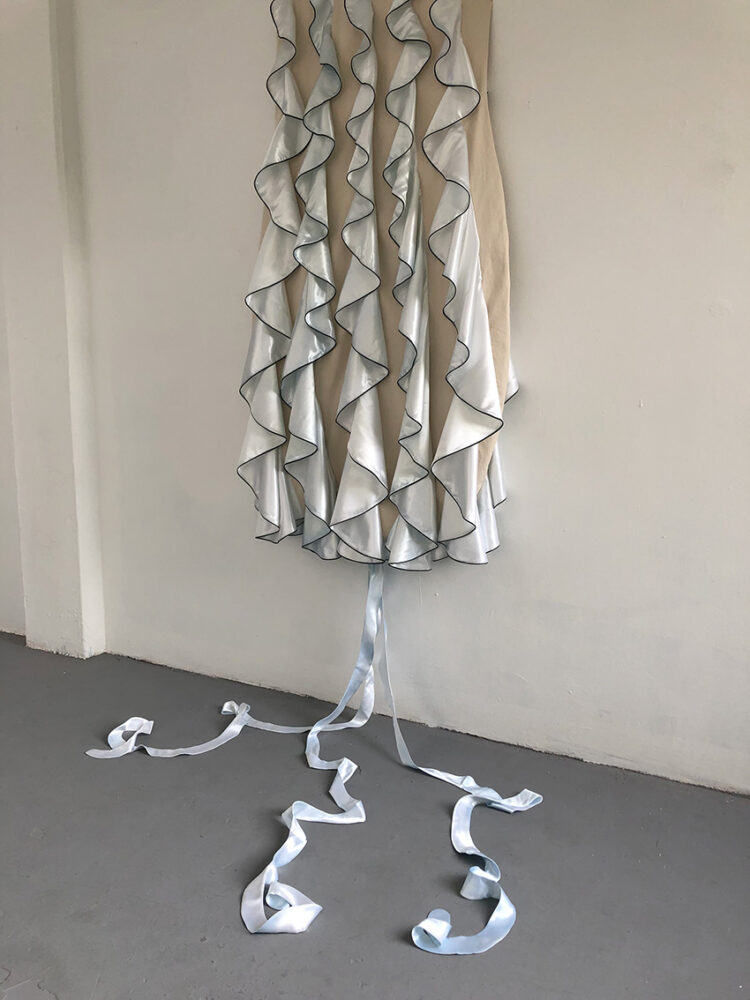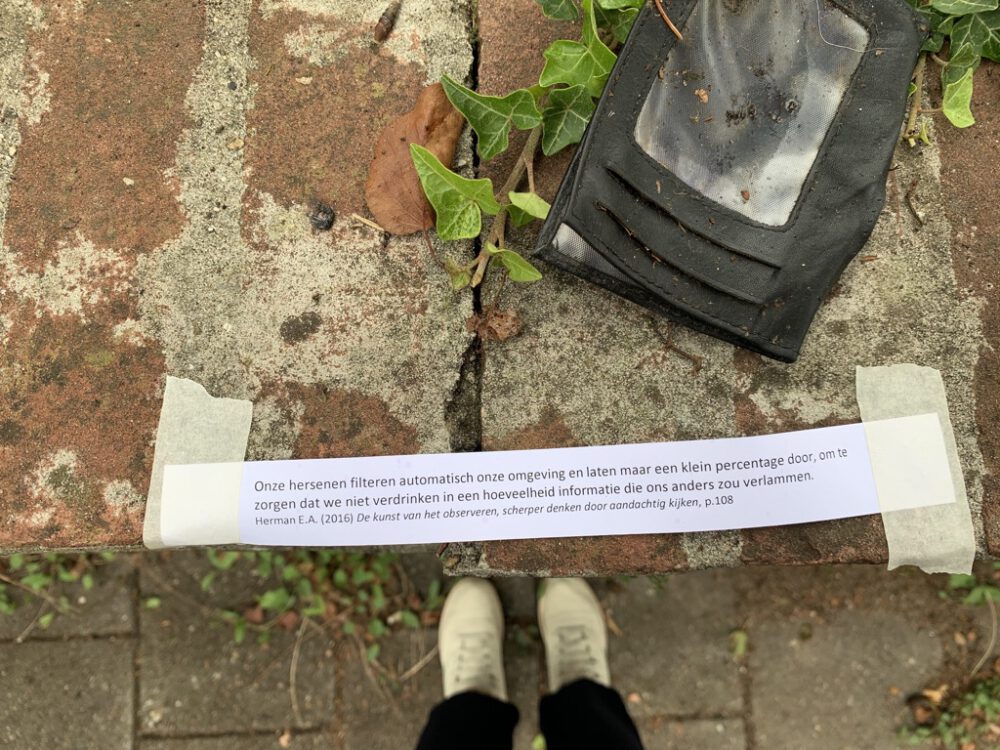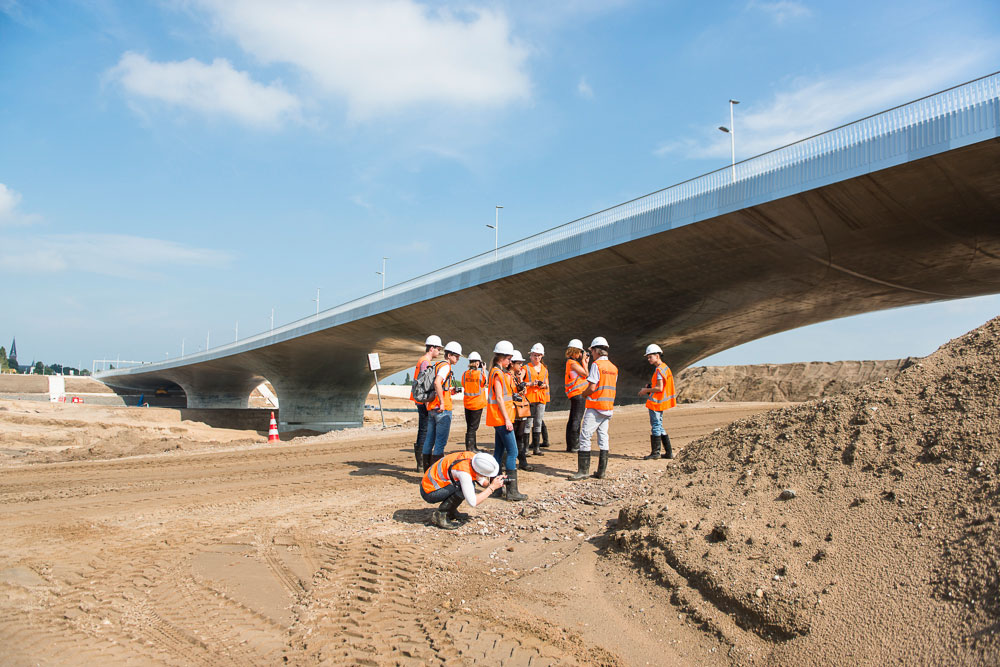Leaky Cases is the title of my solo exhibition at the Bewaerschole in Burgh-Haamstede, the Netherlands, 20 July – 18 August (and the bookstore De Koperen Tuin in Goes as a satellite). I developed new works for the historical space as a result of a short residency on Schouwen-Duiveland.
One of the works was Leaky Bag XXXL, a giant bag made of fermented textiles. I asked a number of Burgh-Haamstede residents to bury pieces of canvas at self-selected locations, for example the beach ´t Oude Vuur, the Walvis bunker, etc. After a period of time, the canvases were dug up. The canvases are full of movements and changes, stains and holes; the canvases have been fermented by leaves and other organic material, snails, spiders, centipedes, beetles and other soil animals. After digging up 12 of the 13 canvases – one canvas was taken by the soil – I sewed the canvases into Leaky Bag XXXL. The giant bag, hanging in the space, leaks all kinds of elements, including seeds collected on Schouwen-Duiveland and residual materials from my work processes. Attached to the bag are labels listing information about the canvases (location, duration, people involved, etc.).
Everything is constantly in motion – capital, goods, ideas, people, microbes, etc. Nothing remains solidified – through all these movements, embraces and collisions, everything is subject to change: microbes, for example, travel in and with people through seas and other landscapes.
I also showed the work Leaky Boxes, carpets composed of cardboard boxes I collected in various supermarkets. I cut these boxes apart, arranged them according to texts, symbols, logos, images and colors, and sewed them back together again, creating a large tapestry of new dynamics, contradictions, displacements, patterns and cross-connections. From the textual information it is somewhat possible to tell who the sender and receiver are, it is a form to communicate over long distances – for example the ports of Hong Kong and Rotterdam – and it is a form that requires trust (that in one place in the world, for example, a logo “this contains no traces of nuts” means the same as in another place in the world).
I invited writer and writer Roy Voragen to share his project A Curated Suitcase at the Bewaerschole to reflect on the themes of the Bewaerschole’s exhibition series through publications (see here). For the exhibition Leaky Cases, Roy Voragen selected publications – books, zines, etc – about migration, borders and visas created by artists, poets and scientists. During the opening, Roy unpacked the suitcase together with the audience.
Roy also wrote 17 new performance scores – which I hand-embroidered on textile cloths – playing with and critiquing borders. And the texts were displayed at the Bewaerschole and the bookstore De Koperen Tuin in Goes.
In my exhibition Leaky Cases I also decided to revisit the painting Welcome to the lonely planet (from the series Typology of an ideal landscape, 2011). For this painting I visited travel agencies pretending to go on a trip to gain access to the world of vacation advertising and brochures – meant to seduce – filled with stock photos of people sunbathing and skiing. By revisiting the work and recontextualize it in this exhibition I intended to let the painting leak onto the floor and allow for its connotations to shift and redirect.
Leakage involves a variety of processes: erode, sediment, scour, symbiotize, move, penetrate, move, migrate, create and exchange ideas, etc. We and others are constantly moving. Migration involves not only people, but also seeds, bacteria, viruses, birds and dunes (walking land).
Lines change. Lines meander. Story lines. Family lines. Coastal lines. Lines leak. Lines fragment. Boundaries are drawn, redrawn. And boundaries go haywire. Boundaries infiltrate stories. Stories with vast branches overflow borders.




